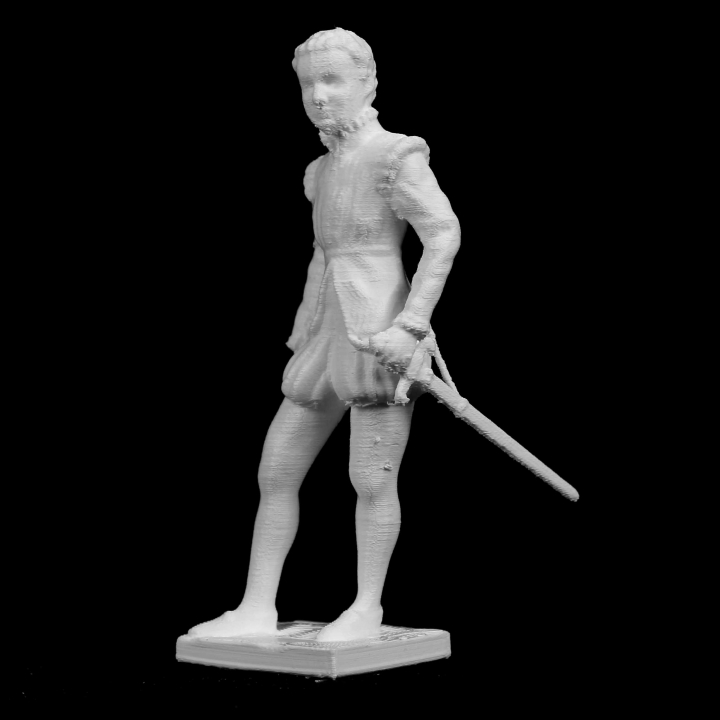
Reklama
3D tiskárny



AONN.cz
Sp┼Ö├ítelen├ę Weby
|
3D modely ARTInfant Henry IV in The Palais des Beaux-Arts in Lille, France

The plaster model for this statue of the young king Henry IV of France was presented at the Salon of 1822. With this work, the neoclassical sculptor Bosio tried his hand at troubadour art - an intimate, anecdotal approach to history. The charm of the statue lies in its air of both youthfulness and gravity. The piece was extremely popular throughout the 19th century. The prince, aged about ten, stands proudly, his left hand holding the pommel of his sword (broken and stolen in 1881), the right hanging loosely by his side. He is charmingly youthful and serious.This statue evokes Bourbon propaganda under the Restoration: the Bourbons used their glorious past, and the affective potential of Henry IV (founder of the dynasty), to enhance their public image. Bosio was a court favorite whatever the regime; he was portraitist to the imperial family under Napoleon I and court sculptor under Louis XVIII, before being granted the title of baron by Charles X. Bosio was a neoclassical master who sculpted in the great tradition of Canova; this statue, an exception in his work, is an early and successful example of the Troubadour style, which influenced painting from the very start of the 19th century, but had a slighly later impact on sculpture. The precision of costume and accessories is characteristic of the Troubadour style, which views history from an anecdotal, intimate perspective, aiming to move the spectator (unlike neoclassical art, which seeks to edify). The portrayal of kings as children provides a touching contrast between the innocence of their state and the gravity of their destiny. Bosio was probably inspired by a 16th-century portrait of Henry IV at the age of four (Château de Versailles) by François Bunel (1522-1599), court painter to the kings of Navarre.Although the artist respected the antique tradition here by giving the sculpture a calm, impassive, and impersonal appearance, he also gave it the undeniable freshness which made the work so successful. Bosio was given a commission for two marble statues: one for the king's residence (Château de Versailles), the other for the Château de Pau (birthplace of Henry IV). The silver statue in the Louvre was installed (unfinished) in the study of Louis XVIII on 25 August 1824, for the king's name day. Bosio obtained the privilege of making twelve bronze casts. The statuette was copied in a variety of materials throughout the 19th century (there is a brightly colored version in glazed terracotta made by Alfred Brault in the Château de Pau). Barbedienne produced many smaller replicas, thereby making the work available to a wider public. n├íhodn├Ż v├Żb─Ťr model┼»
|
©Ofrii 2012
| |||